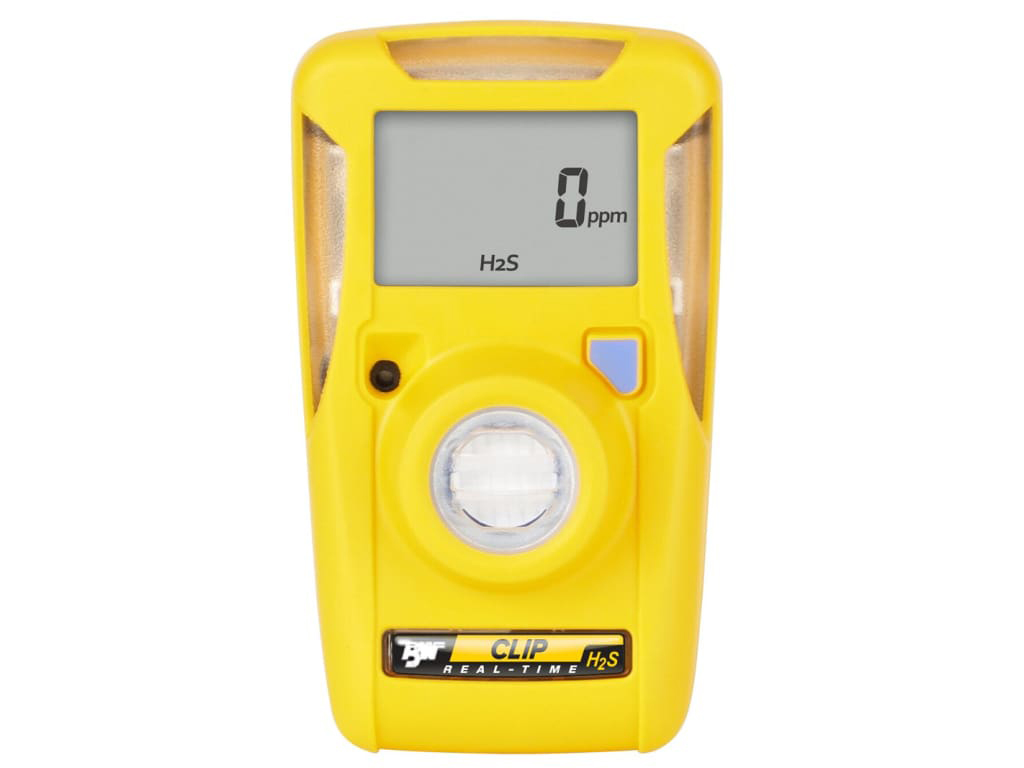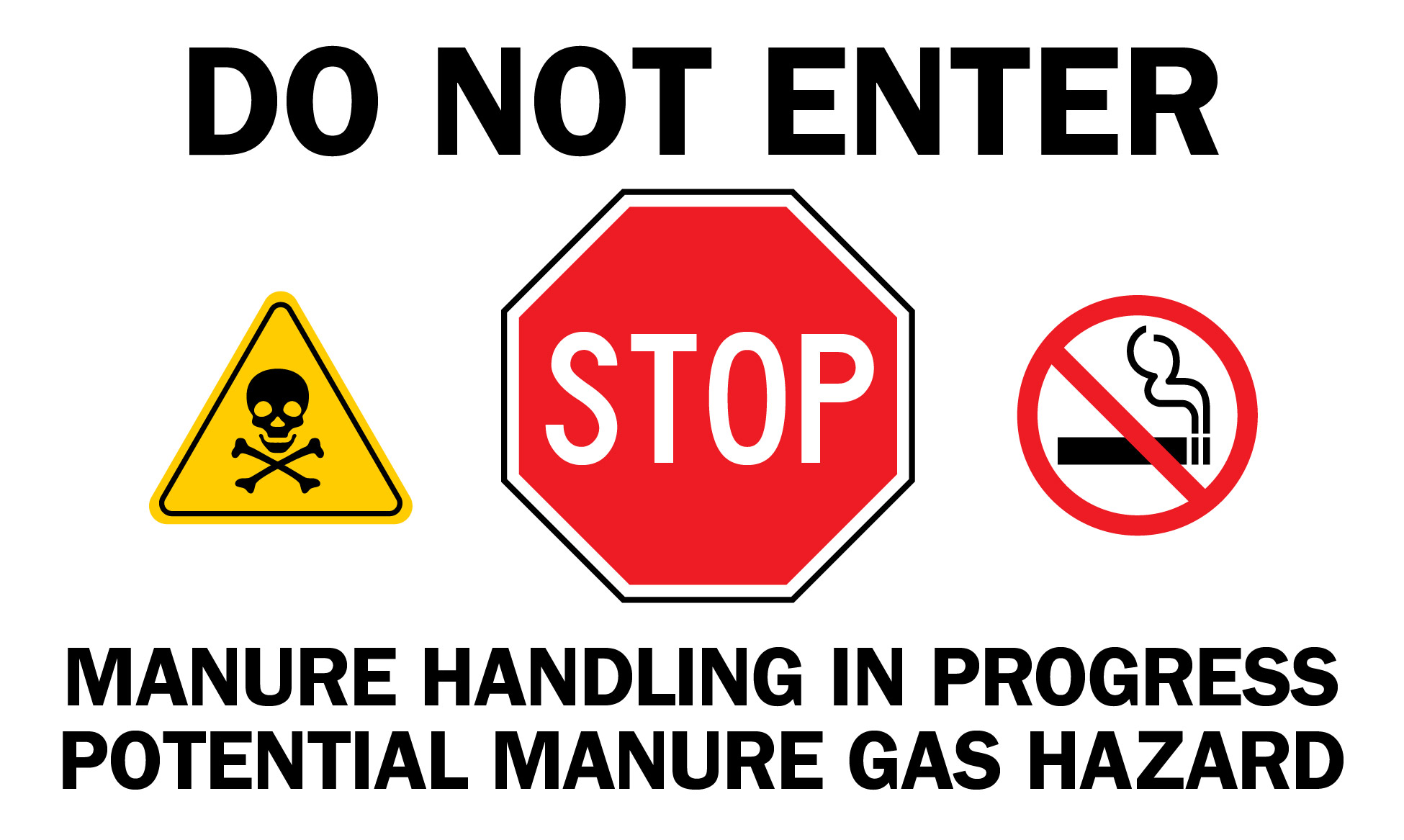Hydrogen sulphide in livestock facilities
Learn how to manage hydrogen sulphide to ensure human and animal safety on the farm. This technical information is for Ontario livestock producers.
ISSN 1198-712X, Published October 2022
Introduction
Hydrogen sulphide (H2S) is the most dangerous gas present in livestock facilities using liquid manure handling systems. It is a chemical asphyxiant because it immediately reacts with the blood’s hemoglobin to prevent oxygen from being carried to the body’s vital organs. Unfortunately, people have died from exposure to hydrogen sulphide gas.
Farm owners and workers must be aware of hydrogen sulphide dangers to ensure human and animal safety. What is hydrogen sulphide, where it is found in livestock facilities and how to manage it are important elements of any awareness program developed for your facility.
Properties of hydrogen sulphide
Hydrogen sulphide is created from the decomposition of biological material in the absence of oxygen. It is a colourless gas that smells like rotten eggs at low concentrations. It remains bound to manure particles resulting in accumulation over time. H2S is denser than air therefore it tends to flow and settle into lower areas of spaces such as manure pits and transfer gutters.
The most dangerous time for release of H2S is during manure transfer and agitation. During these operations, hydrogen sulphide concentrations can increase by over 100 times more than the concentrations in undisturbed pits. Pressure washing can cause increases of 20 times more due to the disturbance of the liquid manure. Dangerous concentrations can exist within minutes of starting these operations.
Hazardous locations
There are several locations in livestock facilities where hydrogen sulphide is found:
- shallow barn gutters
- manure transfer pits
- under-barn deep manure pits
- outside manure storages
- lift and pump stations
- earthen manure storages
- inside liquid manure spreader tanks
Exposure limits for hydrogen sulphide
Ontario’s Occupational Health and Safety Act, 1990 and associated regulations (Regulation 833) provides exposure limits for H2S gas. Concentrations must not exceed 10 ppm when worker exposure is 8 hours per day and 40 hours per week (the TWA or time-weighted average exposure). Short-term exposure for 15 minutes must not exceed 15 ppm.
At low concentrations, hydrogen sulphide smells like rotten eggs. Prolonged exposure at low concentrations will cause eye, nose, mouth and throat irritation. These symptoms may be followed by nervousness, depression, loss of appetite and loss of energy. Chronic exposure can cause fatigue, headaches, dizziness and irritability. Personnel experiencing any of these symptoms must exit the area to fresh air and seek medical attention.
Immediate danger to life occurs at concentrations of 100 ppm or higher. At these high concentrations, H2S paralyzes the sense of smell and is not detectable by the nose. It causes the respiratory control centre of the brain to shut down and death occurs quickly.
Personal hydrogen sulphide monitors
Wear personal H2S monitors while working in hazardous locations at your facility. These monitors are especially important when pulling gravity transfer plugs in manure pits, power washing and agitating manure. Proceed to a safe area immediately if the alarm sounds. Seek medical attention if needed (Figure 1).

Purchase personal H2S monitors from most industrial safety stores. These units usually have a lifespan of two years before needing calibration, service or replacement. Refer to the manufacturer’s information for specific details.
Manure management
Appropriate manure management protocols can help reduce the risk of H2S exposure. Create standard operating procedures and emergency plans for your facility to ensure the health and safety of all workers.
Safety tips for pulling gravity transfer plugs in manure pits, manure agitation or power washing operations include:
- Train all workers on H2S awareness, risks and dangers.
- Train all workers on your standard operating procedures related to manure handling.
- Wear a personal H2S monitor.
- Use a buddy system when pulling plugs or maintain reliable communication with a co-worker.
- Post warning signs (Figure 2) in areas or on doors when pulling plugs, agitating storages or power washing.
- Maintain ventilation fans on full speed.
- Allow a gap of at least 30 cm (1 ft) between the bottom of slats and the top of the manure level in the pit.
- Limit access to barn areas when pulling gravity transfer plugs to empty manure pits.
- Leave the room once manure transfer begins.
- Maintain a regular plug pulling schedule and pull plugs frequently to reduce H2S accumulation.
- Ensure there are no personnel in the barn while agitating under-barn manure storages.
- Do not agitate until there is a minimum of 60 cm (2 ft) between the bottom of slats and the top of the manure level.
- Remove animals from the room above the manure storage if possible.
- Never bend over a manure pit, or enter a pit, manure tanker or transfer pit.

Emergencies
Do not enter the area to rescue a downed worker without proper equipment and training. Proper equipment includes a self-contained breathing apparatus (SCBA). Many deaths occur in pairs when rescuers are overcome by H2S themselves as they attempt to reach a downed colleague. Seek immediate medical attention where exposure has occurred.
Summary
Hydrogen sulphide is extremely dangerous and can be found in many areas of livestock facilities. Implement management practices to reduce H2S accumulation. Develop standard operating procedures and emergency plans for manure handling and washing operations. Train all workers to enhance safety in your livestock facility.
This fact sheet was written by Steve Beadle, P. Eng., engineering specialist, swine and sheep housing and equipment, OMAFRA, and reviewed by Dan Ward, P. Eng., engineering specialist, poultry and other livestock housing and equipment, OMAFRA.